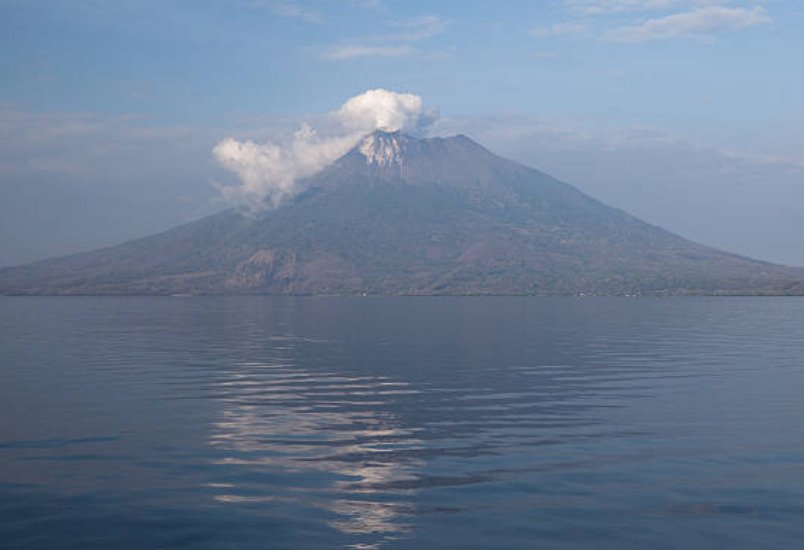
40 Interesting Tsunami Facts
Tsunami is one of the deadliest forces of nature and has the ability to destroy almost everything that comes in their way. With this list of Tsunami Facts it will help you understand how they work, how they form, how big they are and more.
1. A Tsunami is a series of ocean waves caused by an underwater earthquake, landslide, or volcanic eruption.
2. Tsunami waves can reach heights of over 100 ft.
3. About 80% of Tsunamis happen within the “Ring of Fire.”

4. The first wave of a Tsunami is usually not the strongest.
5. Tsunamis can travel at speeds of about 500 miles or 805.
6. The states in the U.S. at greatest risk of Tsunamis are Oregon, Hawaii, Alaska, Washington, and California.

7. If you trapped in a Tsunami wave, it is better not to swim, but rather grasp a moving entity and permit the existing to carry you.
8. Tsunami means “harbor wave” in Japanese.
9. Tsunamis can travel through entire oceans with partial energy loss.

10. Scientists can exactly guess the time when a Tsunami will come to almost anywhere around the world based on calculations using the depth of the water.
11. Hawaii is always at great risk for a Tsunami.
12. The biggest Tsunami occurred in Hawaii happened in 1946.

13. In 2004, the Indian Ocean Tsunami was caused by an earthquake with the energy of 23,000 atomic bombs.
14. A Tsunami is also known as Tidal Wave.
15. The largest Tsunami occurred in Alaska in 1958.

16. A Tsunami is not a stand-alone phenomenon, it is usually a byproduct of other natural force like an earthquake or volcanic eruptions.
17. A Tsunami is composed of a series of waves, which is referred to as a ‘wave train‘.
18. Approximately 99% of Tsunami death toll take place within 160 miles from the point of the Tsunami origin.

19. The Indonesian Tsunami, South Asian Tsunami, Boxing Day Tsunami, Christmas Tsunami are the four other names of the 2004 Indian Ocean Tsunami.
20. With their long bare trunks, Palm trees are the most Tsunami-safe trees on Earth.
21. Megatsunamis are caused by massive landslides and the last Mega-Tsunami recorded was in 1958 in Alaska’s Lituya Bay.

22. Japan holds the record of hosting the most devastating Tsunamis in the world.
23. Japan is also the most Tsunami-prone country in the world.
24. Japan has deployed the world’s most advanced Tsunami warning system.

25. Japan was hit by a massive Tsunami on March 25, 2011, which was caused by an earthquake and it was the fifth most powerful earthquake since 1990.
26. Tsunami can poison mainland with a lot of salt, causing people to die out of hunger and disease after the tsunami is gone.
27. Europe has experienced only two large Tsunamis. One was in 1530 BCE and the other was in 1755 CE.

28. Sailors may not even realize that Tsunami waves are traveling beneath them.
29. According to the scientists, the Canary Islands will be site for the next Megatsunami and it will travel across the Atlantic and destroy many coastal cities of the USA including New York, Miami, and Boston.
30. A wave typically has a negative peak and a positive peak.

31. As a Tsunami nears the shore, it slows down, but it gains more height and energy.
32. Animals can predict Tsunami hours before it strikes.
33. In March 2011, the Tohoku earthquake off the eastern coast of Japan caused a Tsunami that was a major factor in the death of over 15000 people.

34. The costliest Tsunami occurred in U.S. and Canada in 1964. The damage cost roughly $106 million.
35. The Pacific Tsunami Warning System, a coalition of 26 nations headquartered in Hawaii, maintains a web of seismic equipment and water level gauges to identify tsunamis at sea.
36. A Tsunami that occurred in Lisbon in 1755 killed 90,000 residents within minutes.

37. Tsunamis can poison fresh-water surface and groundwater systems as well as soil by leaving large amounts of salt behind.
38. In 1958, Howard G. Ulrich accidentally rode the highest recorded Tsunami (520m) with his boat.
39. The World Bank estimates that rebuilding the Tsunami-affected areas of Japan will cost $232 billion and will take at least five years.
